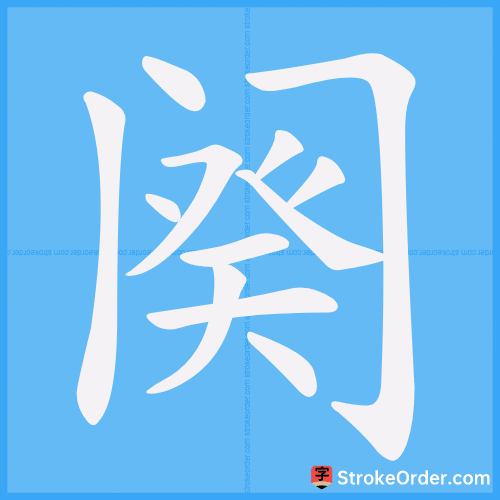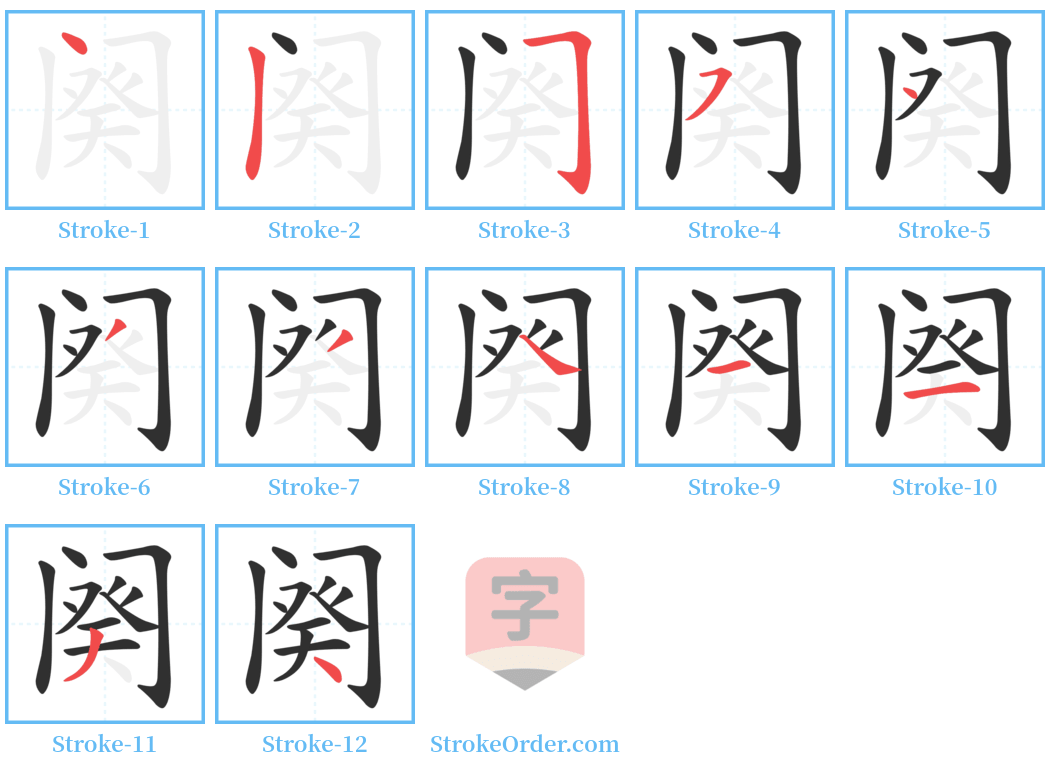阕 Stroke Order
Animated Stroke Order of 阕

Stroke Order Diagrams for 阕

Step-by-Step Handwriting Guide for 阕

Learn to Write Chinese Characters with Video Tutorials
Watch the video of writing the Chinese character "阕", learn the correct stroke order (笔顺) of the character "阕", and master the standard way of writing the character "阕".
Free Printable Handwriting Practice with Stroke Order: 阕
Printable Writing Practice Worksheet of "阕" in Portrait Orientation (Tian Zi Ge)

Printable Writing Practice Worksheet of "阕" in Landscape Orientation (Tian Zi Ge)

Information of 阕
Pinyin
què
Radical
门
Strokes
12 strokes
Usage
★★★★
Definition
section of a song / shut
阕
quē
1. Cease; end.
停止,终了。
For example: 乐~ (music stops), 服~ (the end of a mourning period in ancient times).
2. A measure word for songs or lyrics; one complete piece is called one “阕”; a section of a poem is also called a阕, with the previous section referred to as the “上阕” (upper section) and the latter as the “下阕” (lower section).
量词,歌曲或词,一首为一阕;一首词的一段亦称一阕,前一段称“上阕”,后一段称“下阕”。
3. [Verb] To conclude a ceremony and close the door.
【本义】:祭事结束而闭门
4. [Verb] To stop; to cease (引申为止息;终了) (En. cease; end).
例: 《说文》: 阕,事已闭门也。
5. [Verb] To exhaust; to have none left.
【引】如《诗·小雅·节南山》: 俾民心阕。
6. [Verb] Old term indicating the end of mourning.
旧指服丧期满
7. [Verb] To stop music.
例: 《古今韵会举要》: 阕,曲终为阕。
8. [Noun] A piece of music or lyrics.
乐曲
9. [Noun] One cycle of music is one 阕.
乐一遍为一阕。
10. [Noun] A gap or space.
空隙
11. [Measure word] One complete song or poem is referred to as one 阕.
歌曲或词一首叫一阕。
Example: 弹琴一阕; 填一阕词
12. [Measure word] A section of a poem is called one 阕.
一首词的一段叫一阕。
Example: 上阕; 下阕
Input Method for 阕
Pinyin
que4
Wubi
uwgd
Cangjie
lsnok
Zhengma
tlag
Four Corner
37804
Unicode
U+9615
Same Pronunciation Characters